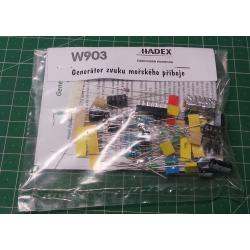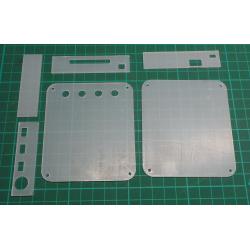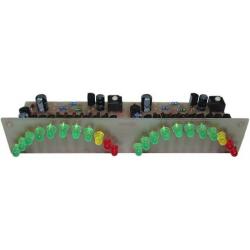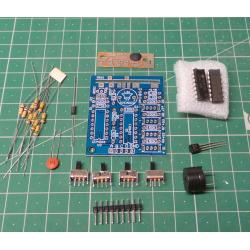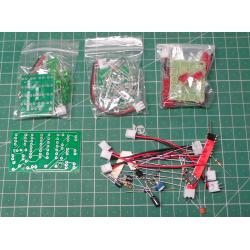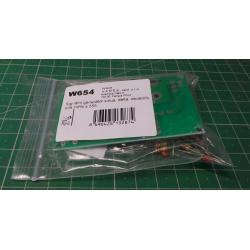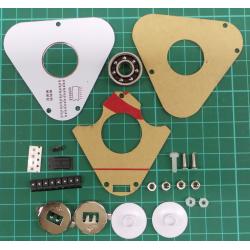No products
Kits
- Active components
- Antennas
- Bargain Packs
- Batteries
- Circuit Prototyping
- Component Selection Packs
- Computer Related
- Blank Media
- Computer PSU's
- Computers (Desktops / Towers)
- CPU's and coolers
- Docking Stations
- Flash Memory
- Graphics Cards
- Hard Disk Donor PCBs
- Hard Disk Spindle Motors
- Hard Disks (Generic)
- Hard Disks (Specific Models /Firmware)
- Input Devices
- Laptop Disk Caddies
- Laptop Display Panels
- Laptop Hinges
- Laptop Keyboards
- Laptop other Spare Parts
- Laptop Power Supplies / Adaptors
- Laptop Wifi cards / modules
- Laptops / Tablets
- Memory Modules
- Monitors
- Motherboard Back Plates
- Motherboards
- Network Cards
- Networking - Routers, Switches, Firewalls e.t.c.
- Other Cards
- Printer Ink (Mostly out of date)
- Removable (Floppy/Optical) Drives
- Sound Cards
- Webcams
- Consumer Products
- Craft Supplies
- Electromechanical
- Adaptors
- Circuit Breakers
- Connectors
- Banana
- Battery connectors / Holders
- Clamps, Croc Clips and Hooks
- Crimp Terminals
- D Type
- DIN Connectors
- Jack
- Other Connectors
- PCB Headers / IDC Connectors
- Pin extraction tools
- PSU Connectors
- RCA / Phono / Cinch
- RF Connectors
- RJ Connectors
- Screw/Clamp Terminals
- Speaker Connectors
- Test Pins
- USB
- XLR / Cannon
- Din Rail Stuff
- Fans
- Fuse Holders
- Loudspeakers / Sounders
- Mains Connectors / Switches e.t.c.
- Microphones
- Motors / Servos
- Panel Indicators
- Panel Meters
- Pumps
- Relays
- Switches
- Tape Heads
- Used Fans - Clearance
- Interesting Old Stock or Used Items/Modules
- Kits
- Labels / Paper Goods
- Measuring / Test Equipment
- Mechanical Hardware
- 3D Printed Items
- Bearings
- Brackets
- Cable Clips
- Cable ties
- Carabinas
- Compressed Air Fittings
- Cotter / Split Pins
- Drive Belts
- Enclosure Accessories (Handles, Protective corners e.t.c.)
- Enclosures / Boxes
- Eurorack / Subrack Parts
- Fan Guards
- Feet
- Grommets / Strain Reliefs
- Heatsinks
- Hose Clamps / Jubilee Clips
- Knobs
- Locks and accessories
- Magnets
- Nuts
- Other mechanical parts
- PCB Standoffs / Spacers / Pillars
- Pop Rivets
- Screws (Machine)
- Screws (Self Tapping and for Plastic)
- Springs
- Wall Plugs / Anchors / Rawplugs
- Washers
- Modules and Circuit Building Blocks
- Passive components
- Power Supplies
- Sensors
- Services
- Tools
- Wire and Cable
 View larger
View larger Electronic siren Kit with fluctuating tone
KIT101
New product
2 Items
Warning: Last items in stock!
- Send to a friend
- Remove this product from my favorite's list.
- Add this product to my list of favorites.
More info
Electronic siren with fluctuating tone
How it works:
The internal RC oscillator of the CMOS 4060 IC, supplemented by external components C2 and R3, generates a clock siren signal with a frequency of about 50kHz. From the clock signal with a cascade of binary dividers, which the 4060 also contains, derives a tone signal for the siren speaker and a modulation signal, which periodically changes the pitch of the tone.
The tone signal is created as a logical sum of two digital signals alternating 1 : 1 from outputs 5 and 7 of the 4060. The sum signal is through the switching and load capacity of at least 5W. The current through transistor T1 is limited by resistor R6. Transistor T1 drives a speaker with an impedance of 8ohms.
The tone signal has a mean frequency of about 1.56kHz and an alternation of 3 : 4, i.e. transistor T1 is switched on for 3/4 of the period of the tone signal and 1/4 period off. Thanks to the 3:4 ratio, the sound of the siren is significantly sharper than if the tone signal were taken from the of output 5 of the 4060, when it would have the same frequency, but alternating 1:1 (can be tried). A modulation signal that creates the siren tone, has a frequency of about 3.1 Hz and is taken from output 13. The rectangular waveform of the signal is the integration element R2, C1 modified to be approximately saw-shaped, and then the working point of the oscillator is shifted by this signal through the separating resistor R1.
Build:
The components needed to assemble the siren are divided into the following groups:
1. Resistors
2. Capacitors
3. Transistor
4. Socket for integrated circuit
5. Integrated circuit.
In this order, it is advisable to insert the components into the circuit board. Bend the resistor legs with a spacing of 10mm, resistor R6 has a spacing of 17.5mm. Next, install the capacitors, the transistor and finally the socket for the integrated circuit. Use high-quality solder (eg Sn60Pb) with a sufficient amount of flux (rosin).
Commissioning:
A 9 to 12VDC source and DMM are required for commissioning.
1. We will check the correct wiring of all components. If everything is in order, clean the board from soldering residues, e.g. with alcohol
2. Insert the integrated circuit into the socket - pay attention to the correct orientation.
3. Connect to the the speaker and after applying the supply voltage, a fluctuating tone will be heard immediately.
4. Check the current consumption, which should be ~150mA.
The siren is now ready for use.
The power of the siren can be increased by reducing the resistance of resistor R6 to zero. In such a case, however, it is necessary to use a more powerful speaker, "stronger" transistor T1 (Darlington with a collector current of at least 5A), which must be cooled and a power supply capable of supplying a current of 2A.
Parts list:
R1 ....................... 1M
R2 ...................... 15k
R3 ...................... 330k
R4, R5 .............. 4.7k
R6 ...................... 22r/2W
C1 ...................... 2.2uF
C2 ...................... 33pF
C3 ....................... 100uF
T1 ........................ KD135 / BD135
IC1 ...................... CMOS 4060
DIL16 socket
Speaker 5W/min. It is not part of the kit
Reviews
No customer reviews for the moment.
30 other products in the same category:





